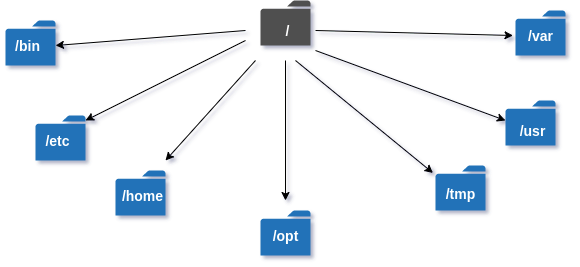Linux Unveiled: Exploring the Heart of Open-Source Operating Systems
 Kiran Ramakrishna Dunka
Kiran Ramakrishna Dunka
What is Linux? 🐧
Linux is an open-source operating system (OS) that powers everything from personal computers to servers, smartphones, and even supercomputers! 🌐 It’s known for its stability, security, and flexibility. Unlike proprietary systems like Windows or macOS, Linux is freely available for anyone to use, modify, and distribute.
Imagine having a car you can modify to suit your needs without any restrictions. That’s what Linux offers in the world of operating systems.
Difference Between Linux and Unix 🔍
While Linux and Unix may seem similar, there are key differences:
Origin: Unix was developed in the 1970s at AT&T’s Bell Labs, while Linux was created by Linus Torvalds in 1991.
Licensing: Unix is often proprietary, meaning you need to purchase it. Linux, on the other hand, is open-source and free.
Usage: Unix is typically used in large enterprise environments, whereas Linux is used in both enterprise and personal environments.
Compatibility: Unix systems can be quite different from each other, whereas Linux distributions (like Ubuntu, Fedora, etc.) maintain a high level of compatibility.
Imagine Unix as the blueprint for a house and Linux as a house built from that blueprint but freely available to modify and improve by anyone. 🏡
Linux Architecture 🏗️
The Linux architecture is composed of several layers that work together to manage the computer’s hardware and provide services to the user.

Hardware Layer 🖥️ This is the physical layer that includes all the hardware components like the CPU, memory, disk drives, etc.
Kernel 🧠 The kernel is the core part of Linux. It acts as a bridge between the hardware and the applications. It manages resources, handles system calls, and ensures everything runs smoothly. Think of it as the brain of the operating system.
Shell 🐚 The shell is a command-line interface that allows users to interact with the kernel. It takes commands from the user and tells the kernel what to do. It’s like a translator between you and the system.
System Utilities 🔧 These are essential tools and programs that help manage and maintain the system. They perform a variety of tasks like file manipulation, process management, and more.
Application Layer 📱 This is where all user applications run, like web browsers, office suites, and games.
Linux File System Hierarchy 📂
The Linux file system is structured in a hierarchical directory tree. Here are some key directories you’ll encounter:

/: The root directory where everything starts.
/bin: Essential binary executables (like basic commands).
/etc: Configuration files.
/home: User home directories.
/var: Variable files like logs and databases.
/usr: User utilities and applications.
/lib: Essential shared libraries and kernel modules.
Think of the file system hierarchy like an organizational chart for a company, with directories for each department and specific roles within those directories.
Some basic commands
Lists files and directories in the current directory.
lsCreates a new directory with the specified name.
mkdir <directory_name>Lists files and directories with detailed information (long format).
ls -lPrints the current working directory.
pwdCreates a new empty file or updates the timestamp of an existing file.
touch <file_name>The
cdcommand changes the current directory.cd /takes you to the root directory, andcd ..moves you up one level in the directory hierarchy.cd <directory_name> # Change to the specified directory cd / # Change to the root directory cd .. # Move up one directory levelTo remove the file and the folder related to that file recursively
rm <file_name> # Deletes the specified file. rm -r <directory_name> #Deletes the specified directory and its contents recursively.Displays the contents of a file.
cat <file_name>Outputs the specified text to the terminal.
echo "text"Writes "hello world" to
newfile.txt, creating the file if it doesn't exist or overwriting it if it does.echo "hello world" > newfile.txtDisplays the contents of a compressed file (gzip format) without decompressing it.
zcat <compressed_file.gz>Shows the first 10 lines of a file by default.
head <file_name>Shows the last 10 lines of a file by default.
tail <file_name> or tail -f <file_name> # -f shows all the last 10 lines even after we update the fileAllows you to view and scroll through a file one screen at a time.
less <file_name>Displays file contents one screen at a time (older command, similar to
less).more <file_name>Copies files or directories from
sourcetodestination.cp <source> <destination>Copies directories recursively, including all files and subdirectories.
cp -r <source_directory> <destination_directory>Moves or renames files or directories from
sourcetodestination.mv <source> <destination>Displays the number of lines, words, and characters in a file.
wc <file_name> -l: Counts the number of lines. -w: Counts the number of words. -c: Counts the number of characters (or bytes).Extracts sections from each line of a file based on the specified delimiter and field number. Replace
<delimiter>with the actual delimiter.cut -d '<delimiter>' -f <field_number> <file_name>Reads from standard input and writes to both standard output and the specified file.
tee <file_name> eg: echo "hello world" | tee or echo "hello world" | tee <file.txt>Sorts the lines of a file in alphabetical or numerical order.
sort <file_name>Compares two files line by line and shows the differences.
diff <file1> <file2>Opens a file in the
vitext editor for editing.vi <file_name> or #to exit from the editor first click on esc then type:wq vim <file_name>To see disk information and disk usage.
df or df -h duTo see all the process.
top or psKill the process.
kill eg. kill -a 'process id'Shows free disk space.
free or free -h
Subscribe to my newsletter
Read articles from Kiran Ramakrishna Dunka directly inside your inbox. Subscribe to the newsletter, and don't miss out.
Written by